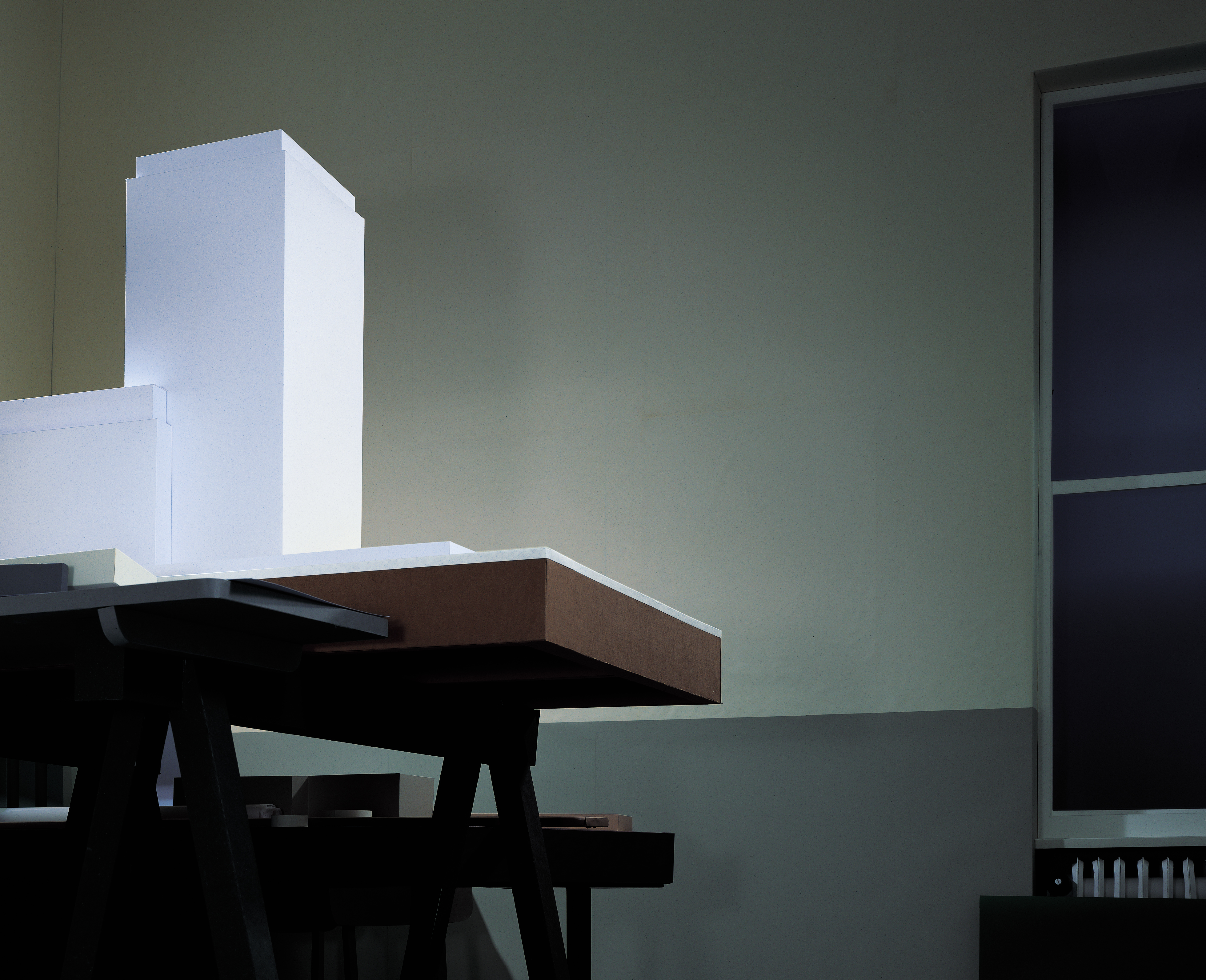This rise has also entailed a diminution of the authority of post-structuralist philosophical and literary forms of theory for which diagrams and other explicitly immaterial systems were most salient.
The rise of interest in and sometimes quite contradictory approaches to the subject is made evident by even just this following sample of publications, exhibitions and events: this series in e-flux, Log 50: Model Behavior and the companion exhibition curated by Cynthia Davidson, and the November 2022 conference “Are You a Model: On an Architectural Medium of Spatial Exploration,” organized by Anna-Maria Meister and the Institute for Architecture Theory and Science at the Technical University of Darmstadt. See also A. Jane Wharton, Models and World Making: Bodies, Buildings, Black Boxes, (University of Virginia Press, 2021); Teresa Fankhänel, The Architectural Models of Theodore Conrad: The “Miniature Boom” of Mid-Century Modernism (Bloomsbury Visual Arts, 2021); Matthew Mindrup, The Architectural Model: Histories of the Miniature and the Prototype, the Exemplar and the Museum (MIT Press, 2019); The Architectural Model: Tool, Fetish, Small Utopia, ed. Oliver Elsner and Peter Cachola Schmal (Scheidegger und Spiess, 2012) and Karen Moon, Modeling Messages: The Architect and the Model (New York: Monacelli Press, 2005).
This argument relies on the media theoretical work of Cornelia Vismann and Bernhard Seigert. In particular, see Vismann, “Cultural Techniques and Sovereignty,” Theory, Culture & Society 30, no. 6 (2013): 83–93; Siegert, “(Not) in Place: The Grid, or, Cultural Techniques of Ruling Spaces.” In: Cultural Techniques: Grids, Filters, Doors, and Other Articulations of the Real (New York: Fordham University Press, 2015), 97–120.
For an interesting discussion of the US Patent Office and its collection of models, see Courtney Fullilove, The Profit of the Earth: The Global Seeds of American Agriculture (University of Chicago Press, 2017).
On competitions and the history of the public sphere discourses, see Richard Taws, “Revolutionary Models/Model Revolutionaries: Architecture, Print, and Participation at The Festival of The Federation.” In: The Politics of the Provisional: Art and Ephemera in Revolutionary France (Penn State University Press, 2013), 70–95; Yvonne Luke, “The Politics of Participation: Quatremère de Quincy and the Theory and Practice of ‘Concours Publiques’ in Revolutionary France 1791-1795,” Oxford Art Journal 10, no. 1 (1987): 15–43.
The definitive study of French festivals remains Mona Ozouf’s Festivals and the French Revolution, A. Sheridan trans. (Harvard University Press, 1991). Garden structures are most commonly referred to as “pavilions,” but many were also models of things, such as temples and huts, and for things, especially agricultural practices. For an interesting discussion of model farm building, see Laura B. Sayre, “Locating the Georgic: From the ferme ornée to the Model Farm,” Studies in the History of Gardens & Designed Landscapes 22, no. 3 (2002): 167–192.
This topic has an enormous literature, but for one general and one specific reference see Robert W. Rydell, All the World’s a Fair: Visions of Empire at American International Expositions, 1876-1916 (University of Chicago Press, 1985), and Pamela Simpson, Corn Palaces and Butter Queens: A History of Crop Art and Dairy Sculpture (University of Minnesota Press, 2021).
See Mark B. Sandberg, “Effigy and Narrative: Looking Into the Nineteenth Century Folk Museum,” Cinema and the Invention of Modern Life, Leo Charney and Vanessa R. Schwartz, eds. (Berkeley: University of California Press, 1995), 320–355.
See the February 23, 2021 interview with Demand on DomusWeb, ➝.
On the history of spatial ordering devices in this context, see Martin Bruckner, The Geographic Revolution in Early America: Maps, Literacy, and National Identity (University of North Carolina Press, 2006), and Andro Linklater, Owning the Earth: The Transforming History of Land Ownership (Bloomsbury Publishing, 2013).
See Allison Carruth, Novel Ecologies, forthcoming with the University of Chicago Press.
